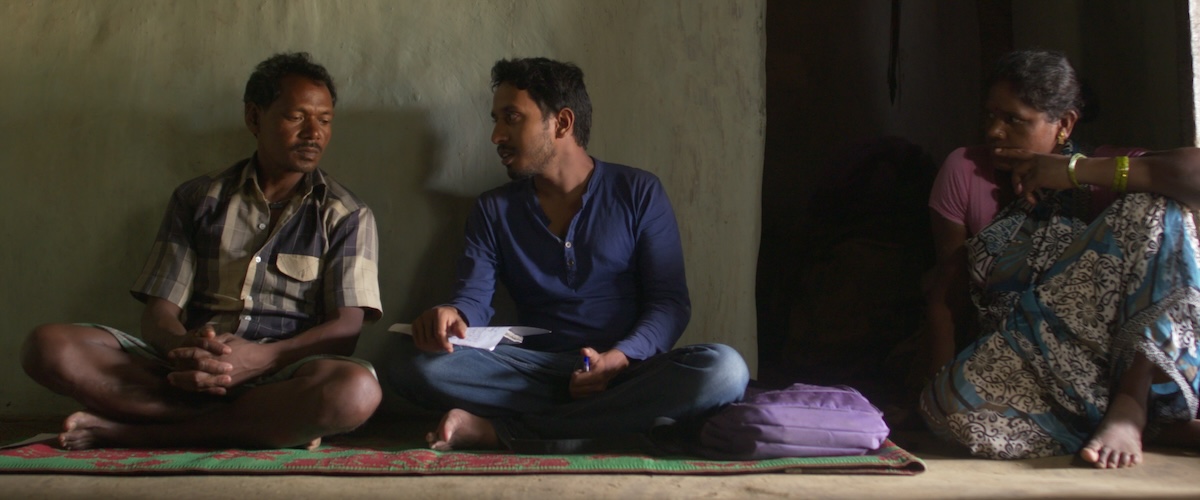Throughout “To Kill a Tiger,” a new documentary from Nisha Pahuja, we bear witness to scenes so devastating and anger-inducing that even viewers fully aware of what they are getting into may be taken aback. This is, I recognize, not exactly the kind of thing that one normally says about a film they are trying to encourage people to seek. But in this case, it seems both accurate and appropriate. “To Kill a Tiger” tells an important story in a compelling manner that makes it worth watching, but its journey is so intense at times it might prove to be too much for some.
The first few scenes are as painful as anything I can ever recall seeing in a film. We see a girl of about 13 named Kiran (a pseudonym) as she braids her hair. Meanwhile, her father Ranjit recounts to the camera how she was raped at a family wedding by three men (including her cousin) in the small northeastern Indian village where they live. We learn that women are raped on average every 20 minutes and that roughly 90% of these crimes go unreported.
The three men were quickly arrested, and feeling guilty for not being able to protect his daughter, Ranjit was determined to have them prosecuted for their crimes. The case comes to the attention of the Sirjan Foundation, a group of activists who see this rare example of a father standing up for their daughter regarding a rape case. Members of the group sign on to help out with the hopes that a successful prosecution will help change the atrocious local attitudes towards such crimes. Those attitudes quickly rear their head when Ranjit and his family find themselves targeted by many of the other villagers for pressing the case in court instead of, as is custom, treating it as a “village matter” and finding some way of compromising with the attackers. For the record, the idea of “compromise” espoused by many, men and women alike, is that Kiran should marry one of her rapists to restore her honor and bring peace and harmony back to the village.
This suggestion is almost breathtaking in its grotesqueness, but it is hardly the only example the family will endure. Kiran is shunned by the locals, most of whom blame the crime entirely on her. Others try to pressure Ranjit to reconsider his decision to prosecute as a way to “rebuild the mood”—when that fails to work, they just threaten to murder him and burn his house down. The father of one of the accused says that the case should be dropped because “they won’t do it again.” The female defense attorney talks about how Kiran is really to blame for the whole incident because women should know better, though she somewhat undercuts herself with practically her next sentence when she admits, “I can’t even trust my own son.” To understand how entrenched this way of thinking is, consider that nearly every example I just cited in this paragraph occurs in front of Pahuja’s camera.
Over the 14 months the case takes to wind through the legal system, we see its effect on those involved and ask whether it is all worth it. There are many points when the ostracization, the threats, and the financial pressures of keeping the case alive threaten to overwhelm Ranjit to the point where there is some doubt as to whether he has the strength to see things through. The locals continue to speak and act in the most appalling ways, even at one point beginning to threaten Pahuja and her crew for their continued interest in the so-called local matter. The person who winds up rising to the occasion, in the end, is Kiran herself—when the local police inspector screws up his all-important testimony in court, the entire case essentially winds up living or dying on the strength of her testimony, and she proves up to the challenge in the excerpt that we get to hear. (Although Pahuja originally intended to hide her face throughout, Kiran, after seeing the footage at age 18, agreed to let her real face be shown throughout.)
“To Kill a Tiger” is not an especially artful example of the documentary form, but this is not the kind of story that requires flashy visuals or a complex narrative structure. It tells its story clearly and directly. Pahuja’s film pulls no punches in its determination to help bring down the long-standing thinking that has compounded the cruelties faced by countless women in Kiran’s unfortunate position. As horrifying as much of what Pahuja documents is to witness, “To Kill a Tiger” manages to genuinely earn a final note of hopefulness.
Now playing in theaters.




















